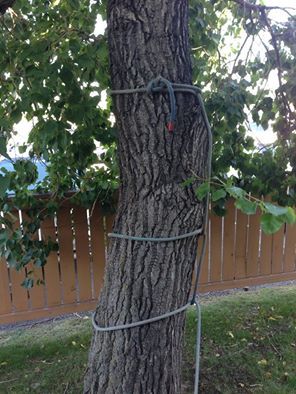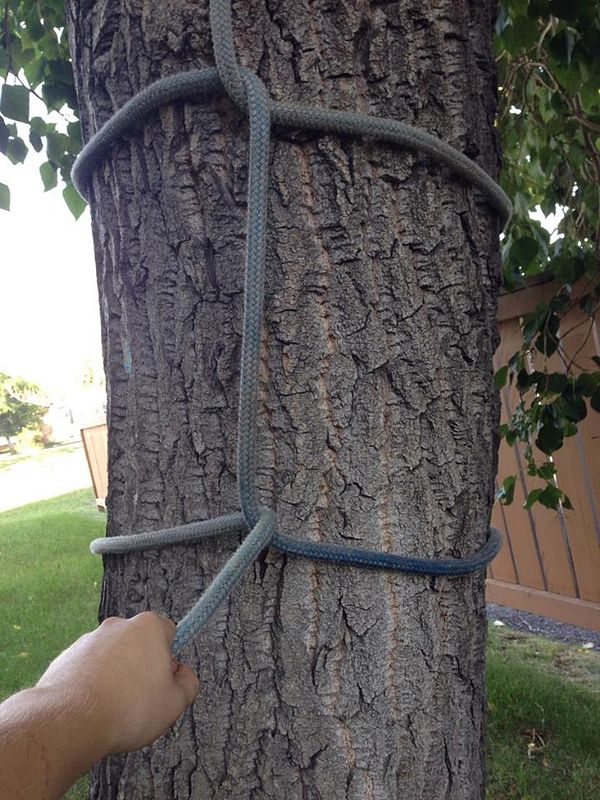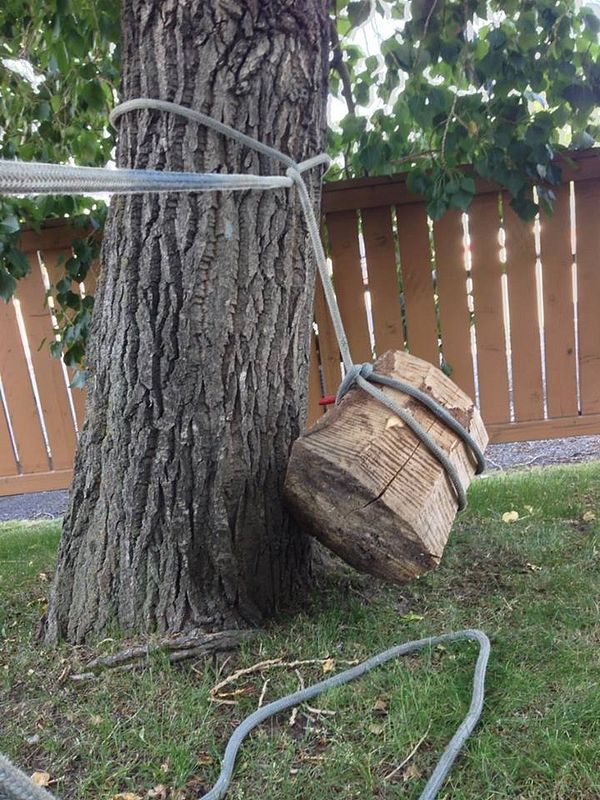DR. P. Proteus
Addicted to ArboristSite
- Joined
- Dec 2, 2013
- Messages
- 2,358
- Reaction score
- 1,357
I have on a time or two, using three strand sort of falsed crotched a chunk or two down without using a pulley. You need to leave a small stub(sometimes two at the same height)run the rope around the tree then(this is important)go under its self and over a stub, face cut the chunk tie it off and let it go. If for some reason the stub doesn't catch it, the rope can slid down the tree. But if placed right it doesn't take a big stub, only a few inches for the rope to be guided in. If you go over the rope and not under it your screwed too. It'll lock its self. This is a good Technic to know, but not one you should use often. if done right you can let it run and brake it your self from the tree. Lot of things can go wrong and its hard on rope.
Yeah!































































